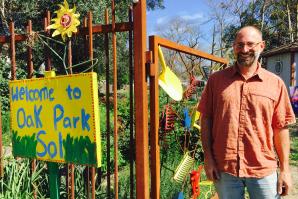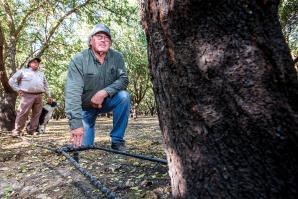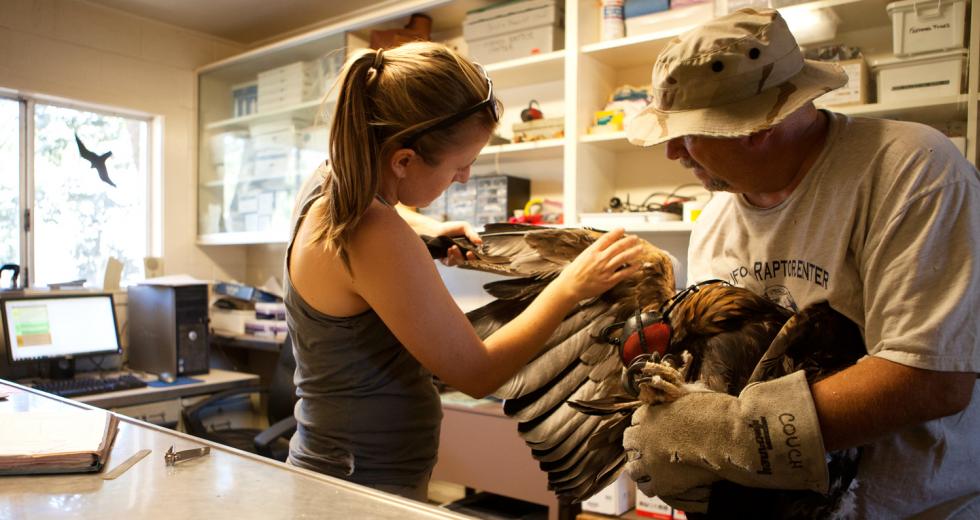We Californians live in direct competition for resources with the wildlife that roam the sky, rivers and land of our Central Valley. Where once there were rolling hills for animals to graze and hunt, now there are freeways. We fill in ditches and build our houses on top of their homes. We leave out poisons that can affect small animals and the birds that hunt them, and we drive vehicles through creek beds, smashing delicate nests and marine life. We often only extend care and concern to the domesticated animals that share our homes with us — but Mittens and Rover aren’t the ones in danger here.
Luckily for the animals, birds and other wildlife in Northern California, there are a few, dedicated nonprofit and volunteer organizations committed to mitigating human encroachment on wildlife habitats and the harm it can cause. Simply by existing in the same space as wild creatures, humans pose a threat. These organizations have made it their mission to care for all animals, big and small — and ensure that their habitat is safe for generations to come — through rescue, rehabilitation and education.
On the Land
Kristy Benner, an education specialist at the Micke Grove Zoological Society in San Joaquin County, knows the impact education can have on young minds. The society is a private nonprofit that supports the Micke Grove Zoo in Lodi, receiving funds and donations on the zoo’s behalf. The education arm of the society was established in 1980, when the county cut education funds to the zoo — leaving it up to the society’s volunteers to plan and execute outreach programs. They visit about 40 schools per year, Benner says.
Related: Pool Party
“We have children who have never seen a squirrel, and certainly have never seen a spider monkey,” she says. “People will only care about what they love and understand, so we have to make them care about these things.”
Benner says they often use their colony of Madagascar Hissing Cockroaches to make a strong impact on visiting students: Unlike local cockroaches, the Madagascar Hissing Cockroach is a good bug — “a living Spider-Man,” says Benner, that can climb almost anything and cares for the rainforests of Madagascar by scavenging and cleaning up what has fallen to the ground. Though they may look scary, they’re critical to an area’s thriving ecosystem. “We explain how removing something from the food chain causes a chain reaction. It can open up the world for them,” she says. “At the end of the talk, they say, ‘OK, not a favorite, but I see the job it has to do.’ Suddenly it makes sense that we need to be taking care of these resources.”
The Wildlife Care Association based at McClellan Park uses local birds, animals and reptiles — like their resident Red Tail Hawk and California King snake — to teach students and adults in the Sacramento, Yolo and Placer counties about local ecology. The program has several full-time residents like owls, a yellow-billed magpie and a white crow that travel with them to classrooms to demonstrate ecology and animal care.
And like Micke Grove’s Hissing Cockroaches, the WCA often takes in animals considered unwanted, but that actually help address problems like mosquito, rat and mice populations. Wildlife Care Association President Theresa Bielawski says her organization receives lots of hurt animals. Mostly squirrels and opossums, but sometimes hummingbirds, otters, beavers, skunks, coyotes and the occasional deer fawn. “We are raising them, but keeping them wild,” she says. “They’re not puppies and kittens.”
“Anytime someone finds a sick animal they come to us,” Bielawski says. “It’s a service to our community and we appreciate the community support.” The association’s animal hospital can support up to 1,500 animals at a time and often sees more than 6,000 local wildlife come through its doors every year — so volunteers are always wanted. “There’s always something someone can do,” Bielawski says.
Through the Air
At the California Raptor Center in Davis, Dr. Michelle Hawkins and her army of vets and volunteers helps educate the public about birds of prey and how we all have a common connection.
“We can talk about something, but when we show it, it makes an impact.” Dr. Michelle Hawkins, director, Raptor Center, California
The center, part of the UC Davis School of Veterinary Medicine, is strictly for wild birds of prey, including falcons, hawks and eagles. The center sees upward of 200 to 350 injured and rehabilitating birds every year. Birds go through a sort of triage, like any regular hospital, and are reintroduced back into the wild as soon as possible after recovery — but it’s a tricky estimation, Hawkins says. The birds depend on their hunting skills, so even if a bird is technically recovered, the veterinarians have to make sure its hunting abilities are not diminished in any way, or else the bird will starve and die. “Our mission is not only to rehabilitate the birds but also to educate the public on how they can help as a citizen,” she says. “We’d love to see less birds coming in.”
Often, birds come to the center that have been poisoned by rodenticides, not because they have eaten the poison themselves, but because they have hunted and eaten a rodent that was recently poisoned but not yet dead — resulting in a secondary intoxication.
“We can change our behavior to directly affect the environment,” Hawkins insists. “We can talk about something, but when we show it, it makes an impact.” Often, classes ranging from kindergartners to adults will come to see the center’s ambassador birds, raptors, hawks and bald eagles, and hear about how people are directly affecting the environment and wildlife.
“We hear this over and over again, ‘When I was young and impressionable, I was able to see birds of prey up close and it helped me to engage with the environment.’”Hawkins says.
In the Water
In Woodland, Nancy Ullrey and the Cache Creek Conservancy are fighting hard against pervasive ignorance to preserve and protect the wild and natural habitats of the animals, birds, amphibians and fish that call Cache Creek their home.
Related: Encounters with Keepers at the Sacramento Zoo
Though the creek and its surrounding land are protected as a nature preserve, Ullrey says the area has a major problem with poaching and all-terrain vehicles off-roading — destroying precious and fragile ecosystems. “There is a lot of ignorance about habitat and wildland. We’re not a park; we’re not a zoo,” Ullrey says. “Don’t try to pick up the snakes.”
The Cache Creek Conservancy holds outreach programs about the waterway, and recently started a pilot program for adults that discusses the history of the preserve, local birdlife and native plants. “This creek is important because it’s a wildlife corridor, it provides water and food for different species and is a habitat for aquatic species,” she says. “Water is essential to life and habitat.”
Ron Stork knows that well. He’s the policy director at Friends of the River, a statewide river protection group. “Every state should have a river group that works in the capital city and looks out after the river,” Stork says. “They tend to be things that can be thrashed pretty easily; somebody needs to speak for them.”
From their office in Sacramento, Friends of the River works with the state and electric companies on issues related to dams and hydroelectric projects, Stork says, and has “[its] fingers in issues from the Salton Sea to the Klamath River.” Stork says the group was instrumental in a 2000 agreement to change the operating rules of Folsom Dam to be more fish-friendly, which also conveniently makes the dam more reliable with water deliveries. His group also works to encourage the growth of local salmon and steelhead trout populations in Northern California waterways, and fight for air traffic restrictions over local habitats like the Yolo bypass.
“These are assets that most communities would part with their left arm to have,” Stork says. “We’re doing OK but we can do better.”
Recommended For You

Oak Park Sol Brings Nature Back to City Dwellers
New urban land trust builds community gardens, holds cooking classes
Oak Park’s Broadway throbs as bass bumps from one car and another’s engine belches. Someone honks their horn. Other cars buzz by well above the speed limit. This is urban living. But it doesn’t have to be. Thanks to Oak Park Sol, a newly-formed nonprofit serving as an urban land trust, this neighborhood is bringing nature back to its city-dwelling folks.

Hiding in the Shallows
As farmers switch from flood irrigation to drip, California’s water tables are falling
Agricultural groups and the federal government are actively encouraging growers to improve their irrigation systems to save water, usually by graduating from flooding, and farmers who haven’t upgraded have received stinging criticism. But drip irrigation is not necessarily a panacea for water shortages.



